Key takeaways:
- Editing is a transformative journey that emphasizes clarity and the refinement of ideas.
- Revisions are essential for uncovering deeper insights and enhancing the core message of a piece.
- Utilizing techniques like multiple editing passes, the 20/20 rule, and peer feedback can significantly improve the editing process.
- Creating a flexible revision checklist helps maintain focus and adapt to different writing styles, improving overall clarity and effectiveness.
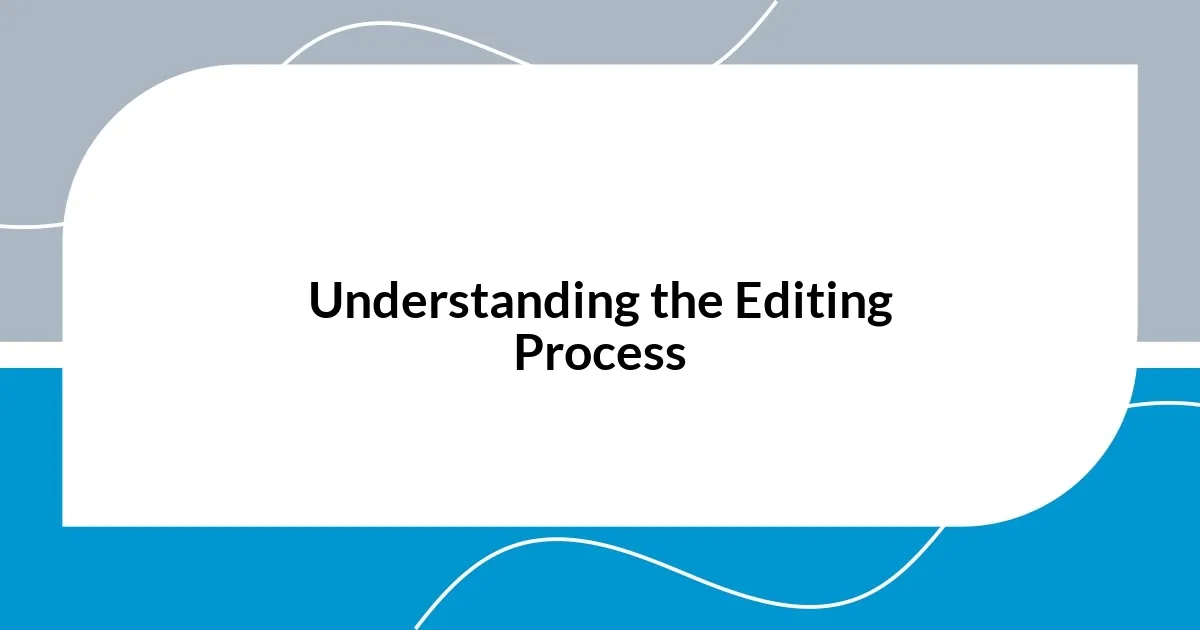
Understanding the Editing Process
Editing is a journey that transforms a rough draft into a polished gem. I remember sitting at my desk, surrounded by papers covered in notes and corrections. It can feel overwhelming, but each mark I made held the promise of improvement, almost like a personal conversation with my work on what could be better.
Every time I sit down to edit, I approach it with fresh eyes, hoping to uncover areas that can shine brighter. I often ask myself, “What’s the core message here?” Sometimes, I find that a single sentence can be the heartbeat of the piece, and if it’s not beating strong enough, it needs to be restructured or even removed entirely. It’s a bit like sculpting; sometimes, less is more.
One of my favorite strategies is to read the work aloud. This small step often reveals clunky phrases or awkward rhythms I might otherwise miss. I recall a time when I read a passage at a coffee shop, and the reactions of my friends helped me realize how certain sections resonated—or fell flat. How do your words sound when they escape the page? Engaging in this kind of editing dialogue opens up new perspectives and allows the piece to evolve into something even better.
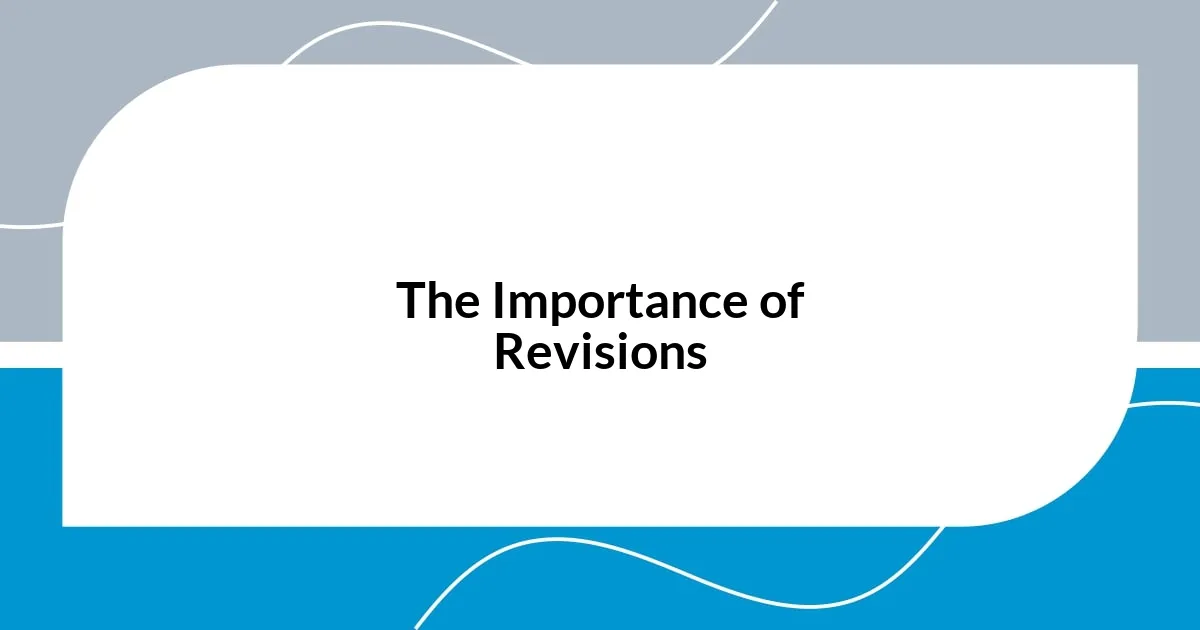
The Importance of Revisions
Revisions are crucial because they allow us to refine our ideas and express them clearly. I’ve often found that stepping away from a draft for a day or two lets me return with a fresh perspective. This distance isn’t just beneficial; it’s transformative. Each revision is a unique opportunity to ask deeper questions about my work and its intentions.
- They enhance clarity by allowing us to remove distractions and tighten our focus.
- Revisions enable us to highlight key themes that might have been buried in initial drafts.
- They often reveal mistakes that can change the overall impact of the message.
- Revisiting our work encourages creativity, sparking new ideas and angles we hadn’t considered before.
I remember a piece I spent weeks polishing. After several rounds of revisions, I discovered a powerful metaphor buried in my initial drafts that transformed the piece’s message. I hadn’t noticed it before; it felt like finding a hidden treasure. Those moments remind me that revisions are not just about correcting mistakes; they are about uncovering the true essence of what we want to communicate.
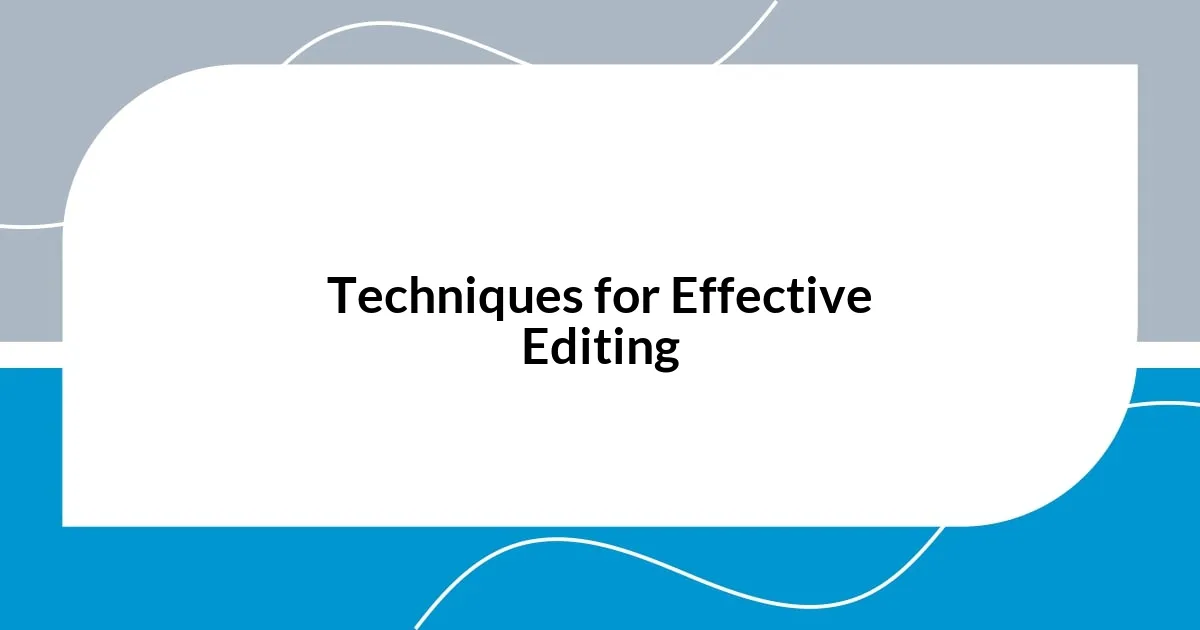
Techniques for Effective Editing
Techniques for Effective Editing
One valuable technique I’ve adopted is the use of multiple editing passes. I find that focusing on one element at a time—grammar, structure, or flow—makes the process less daunting and more effective. During a recent project, I realized my paragraphs were too lengthy, breaking my flow. By dedicating a session strictly to tightening them up, I breathed new life into my writing.
Another approach I swear by is the 20/20 rule. After I finish a draft, I set it aside for a full 20 hours, then dive in with fresh eyes. I often find unexpected issues that I simply wouldn’t have caught before. On one occasion, I was shocked to discover that a sentence I thought was brilliant really muddled my main idea. This experience taught me that time is indeed a friend to clarity.
Utilizing peer feedback is also essential in my editing toolkit. I’ve learned that sharing my drafts with trusted friends not only brings in fresh perspectives but often sheds light on what I may have overlooked. I remember a time a friend pointed out a recurring theme I didn’t even notice in my latest piece. Their insight shifted my focus, taking my work to a place I hadn’t anticipated.
| Technique | Description |
|---|---|
| Multiple Editing Passes | Focus on one element of editing at a time to streamline the process, like grammar or flow. |
| 20/20 Rule | Set drafts aside for 20 hours then revisit them with fresh eyes to uncover hidden issues. |
| Peer Feedback | Share drafts with friends for new perspectives that may highlight overlooked areas. |
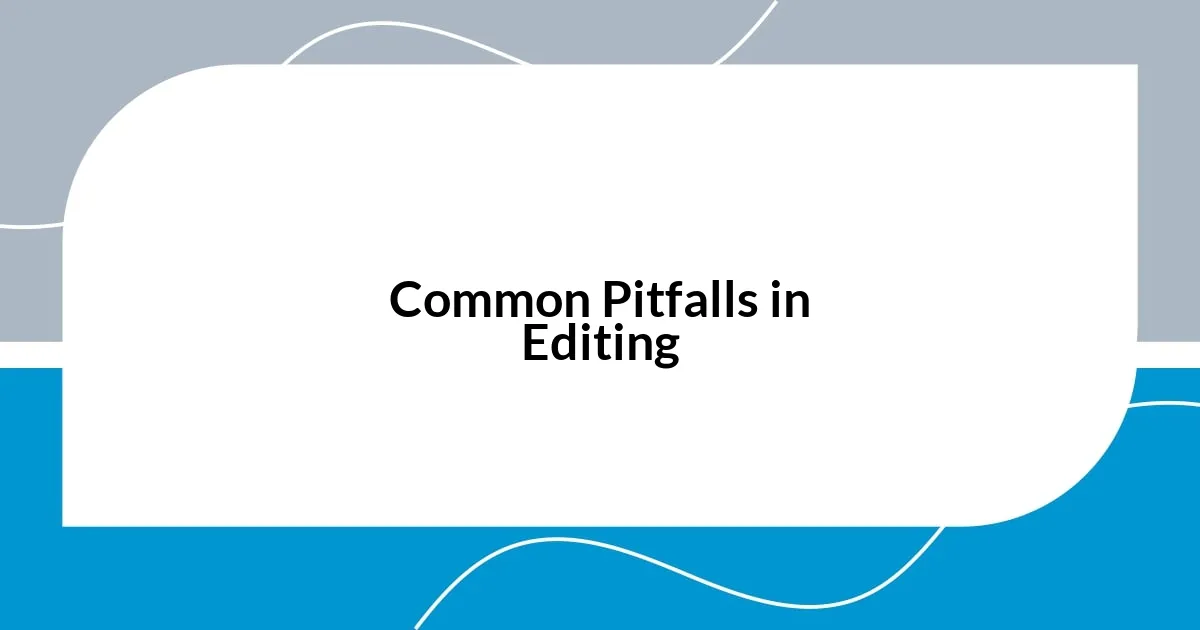
Common Pitfalls in Editing
One common pitfall I often encounter in editing is getting too attached to specific phrases or ideas. It’s easy to feel a sense of ownership over our words, almost like they’re part of us. I remember a time where I clung to a beautifully crafted sentence that, despite its charm, had no relevance to the overall message. Letting go can be hard, but I’ve learned that clarity is far more important than pride in poetic lines.
Another trap is the temptation to rush through the final stages of editing. After pouring so much time and energy into a project, there’s a natural inclination to wrap up quickly. I once hastily submitted a piece only to realize later that I had overlooked glaring typos and awkward phrasing that undermined my credibility. It’s a painful reminder that the end is not the time to skip the thoroughness that earlier revisions required.
I also find that ignoring the importance of pacing can be detrimental. Sometimes, I’m so eager to get to the climax of the piece that I rush the journey there. I recall a draft where I sped through key arguments, leaving my readers breathless but confused. Have you ever felt lost in a narrative because the writer didn’t lead you through it? Taking the time to build momentum and allowing the reader to fully digest each point is crucial for effective communication.
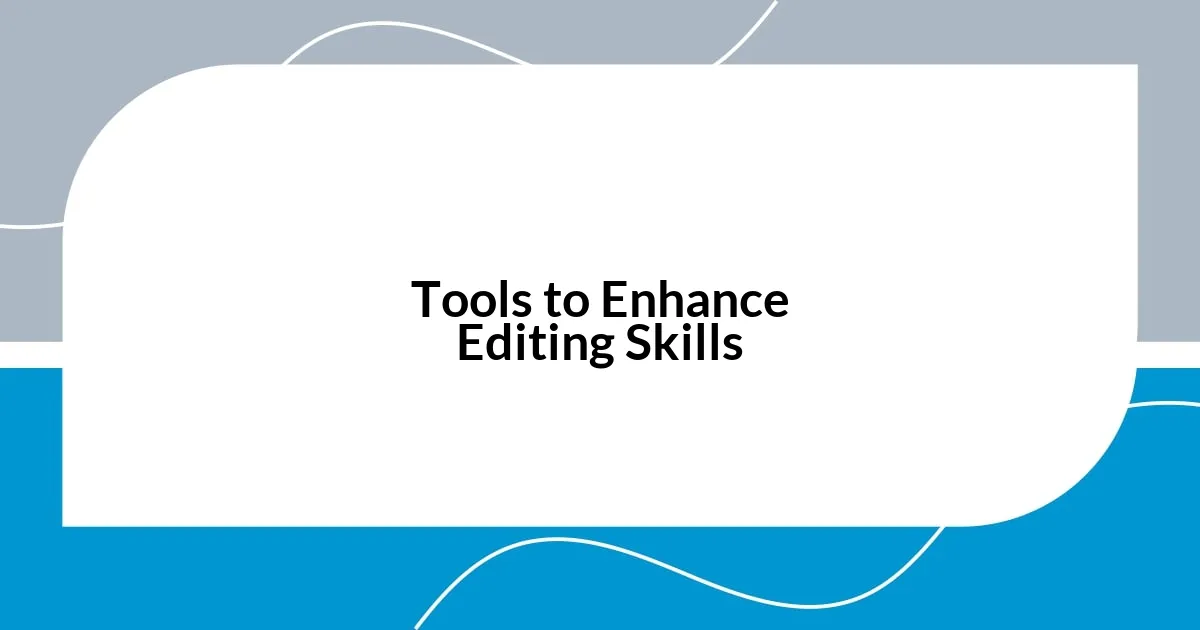
Tools to Enhance Editing Skills
When it comes to tools that enhance editing skills, I can’t recommend grammar and style checkers enough. Programs like Grammarly or ProWritingAid have been game-changers for me. Recently, I ran a piece through Grammarly and was surprised at how many subtle errors I had overlooked, transforming my article from clunky to polished almost instantly.
Another tool I find invaluable is Text-to-Speech software. Listening to my writing read aloud allows me to catch awkward phrasing and unclear sections that I might miss when reading silently. Just the other day, I used this feature on a piece I thought was solid. It made me realize that my sentences were too long and complicated, leaving listeners scrambling to follow my thoughts. Has this ever happened to you? It’s a humbling moment, reminding me of the importance of clarity and rhythm.
Finally, I’ve started using project management tools like Trello for organizing my editing process. This might sound a bit unconventional, but breaking down my editing tasks visually helps maintain focus. During my last project, I created cards for different editing stages, marking each completed task. Seeing my progress this way was incredibly satisfying and kept me motivated to push through to the end. Have you ever thought about how organization could transform your editing experience? It surely has for me.
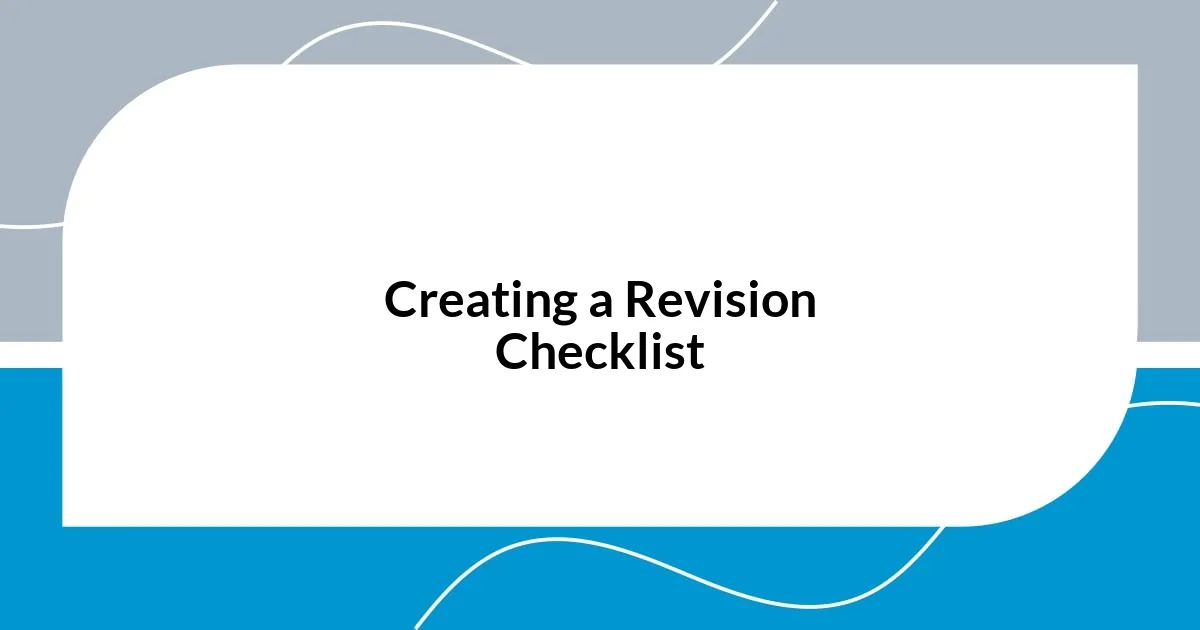
Creating a Revision Checklist
Creating a revision checklist has been a game-changer in my editing process. I often start with a simple list of essential elements to review: grammar, structure, clarity, and tone. This checklist helps me stay focused and ensures I don’t miss important details, especially when I’m immersed in the text. Have you ever felt overwhelmed during revisions? I certainly have, and having that checklist alleviates a lot of the stress.
One time, I decided to categorize my checklist into different sections. For instance, I’d separate items on grammar from those related to structure. This organizational strategy clarified my priorities, enabling me to tackle each category systematically. I vividly recall revising a research paper that felt chaotic until I broke it down this way. Seeing my progress on each item boosted my confidence and kept me energized.
I also strongly believe in the power of flexibility when it comes to my checklist. While I have core elements I always cover, I adapt my checklist for different projects or writing styles. For example, in a creative piece, I might focus on emotional resonance and imagery more than I would in an academic essay. I find that this adaptability allows me to connect more deeply with my audience. How do you tailor your editing approach? It’s fascinating to discover what works best based on the context of your writing!
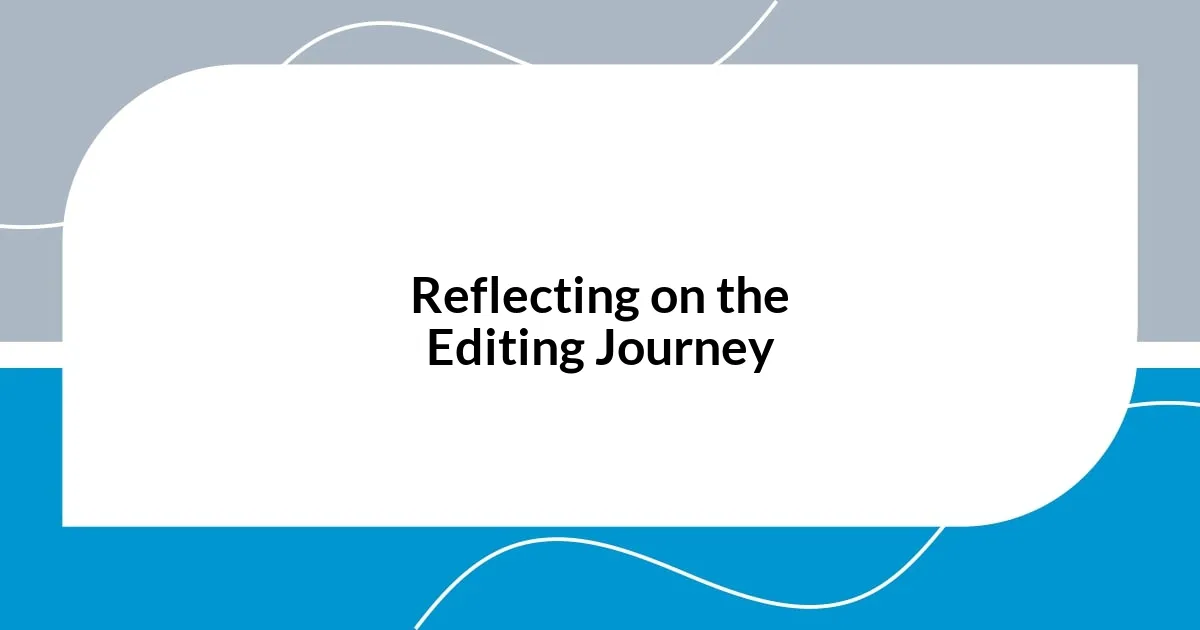
Reflecting on the Editing Journey
Reflecting on my editing journey has truly opened my eyes to the nuances of good writing. Early on, I often rushed through this stage, thinking my first draft was the final product. It wasn’t until I stumbled upon an old article of mine, littered with distracting typos and awkward transitions, that I fully grasped the power of editing. Have you ever felt that disappointment? It was a wake-up call that taught me to embrace the editing phase as a crucial part of my creative process.
Another pivotal moment came when I realized that editing is not merely about correcting mistakes; it’s about refining my voice. I remember working on a short story that I cherished, but it felt too cluttered. I took a step back and revisited my drafts several times, making tough decisions about what to cut. In doing so, I discovered the beauty of simplicity. Isn’t it liberating when you find that less truly is more? It’s in these moments of reflection that I’ve learned the value of clarity and precision.
I often reflect on how my editing journey has taught me resilience. There have been times when I poured my heart into a piece, only to see it transform beyond recognition during revisions. Initially, it stung. But as I grew, I embraced those changes, seeing them as opportunities for growth. How do you handle those emotional roller coasters in your writing? I’ve found that each revision brought me closer to the essence of what I wanted to convey, ultimately enhancing my work—and my confidence.